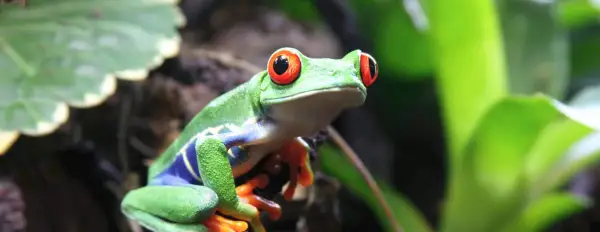Small Group Experiential Travel
Tour Code
CR1 When To Go
Feb, Mar, Oct, Nov Start
San Jose (SJO) End
San Jose (SJO) Countries Visited (1)
Costa Rica Overnight In (4)
San Jose, Aren...More > Activity Level
2 - Moderate? Tour Type
Cultural? - Overview
- Info & Inclusions
- Itinerary
- Map & Hotels
- Photos
- Dates & Prices
Highlights
- Max Group Size 18
- Exploring the canals of Tortuguero
- Soaking in Baldi Hotsprings
- Monteverde Cloud forest walk
- Arenal Volcano
- Hummingbirds, sloths & butterflies!
- Singles friendly (view options for single travellers)
Description
Get closer to nature with Costa Rica guided tours and never look at the natural world the same way again. It doesn't take long to come to understand the motivation behind the dedication to the conservation efforts in Costa Rica.
Costa Rica is a nation in which a quarter of the country's total territory is protected within national parks and designated conservation areas. We head to one of the country's largest national parks in the initial stages of our Costa Rica adventures to witness the beauty, diversity and richness of a unique and striking natural environment.
We wander through verdant, mist-shrouded forests, spend time relaxing on paradisiacal gold-sand beaches, or in bubbling hot springs with the majestic Arenal volcano as a backdrop, cast off for a boat trip through untouched wilds along the canals of Tortuguero Park and become entranced by the magic of a glorious country whose nature comes second to none.
Costa Rica is a nation in which a quarter of the country's total territory is protected within national parks and designated conservation areas. We head to one of the country's largest national parks in the initial stages of our Costa Rica adventures to witness the beauty, diversity and richness of a unique and striking natural environment.
We wander through verdant, mist-shrouded forests, spend time relaxing on paradisiacal gold-sand beaches, or in bubbling hot springs with the majestic Arenal volcano as a backdrop, cast off for a boat trip through untouched wilds along the canals of Tortuguero Park and become entranced by the magic of a glorious country whose nature comes second to none.
Price Includes
- Full-time Tour Leader services plus local guide support in several locations.
- Breakfast and dinner daily (hotels and local restaurants).
- All transport, sightseeing and entrance fees for sites noted as 'visited' in the detailed itinerary.
- Gratuities for local guides, drivers, restaurant staff, hotel porters (if available).
- Airport transfers for land & air customers and for early arriving/late departing land & air customers who book both their air AND their extra hotel nights through us.
- This tour can be EXTENDED to include beautiful Granada, Nicaragua and a stunning cruise on Lago Nicaragua - please refer to tour code CR2
Exclusions
- International airfare to/from the tour.
- Tour Leader gratuity, lunches, drinks, personal items (phone, laundry, etc), departure taxes, and international air taxes (if applicable).
- Airport transfers for Land Only customers. Optional trip cancellation insurance.
Trip Info
- Seasonality and Weather:
The latter half of October and November are toward the end of the the "green" season, especially on the Pacific coast, while the Caribbean coast experiences drier and sunnier weather. Temperatures range from 22-31C (72-88°F) throughout the country. Travelling during this time can be like discovering a lush, green Costa Rica with fewer tourists, making it ideal for nature lovers and those looking for a more relaxed atmosphere. The rainforests are particularly vibrant, and the rain can bring a welcome coolness to the cities.
In February/March, Costa Rica is in its dry season, with plenty of sunshine and minimal rainfall. Temperatures are pleasant, ranging from 16-28C (61-82°F) in the mountains and 22-32C (72-90°F) in coastal areas.
Overall, both periods offer unique experiences, and the choice depends on your preferences. - Transport and Travel Conditions:
Road transport by private air-conditioned motor coach, 12-30 seats depending on ultimate group size (see 'group size'). Costa Rica's roads are generally good though we do have some long-ish (though scenic) road journeys with plenty of stops for refreshment en route.
As this is primarily nature-focused experience, most of our activities will occur outdoors and involve walks on uneven/rocky surfaces at a leisurely pace. You should be prepared with the right footwear and be capable of being on your feet for several hours in order to fully enjoy what this destination has to offer.
Our difficulty level "2" rating refers to the above-mentioned busy days, walking tours on uneven terrain, lack of handrails (public and elsewhere, ie shower stalls), and fatigue that can be caused by heat and humidity in coastal locations.
Am I suitable for this tour? Please refer to our self-assessment form - Activity Level: 2
These are particularly busy tours that feature a lot of moving around, sometimes by train and short journeys on local transport. Walking tours of towns and cities are leisurely but you should be prepared to be on your feet for several hours. Some of our cultural trips that occur at high altitude and/or require greater independence with baggage handling (at hotels, airports, train stations) also fall into this category.
To learn more about the Activity levels, please visit our tour styles page. - Accommodation:
Well-located, heated/air-conditioned, mid-range (3 star) hotels with en suite toilet and bathroom throughout. Single rooms are limited and likely smaller than doubles.
Hotel porter service is sometimes available (see 'inclusions') though you should be independent with your luggage. Some hotels have outdoor swimming pools.
Please click on the "Map & Hotels" link for more information. - Staff and Support:
Tour Leader, driver/s, and local step-on guides at various locations. - Group Size:
Maximum 18 (plus Tour Leader)
View / Print Itinerary
- Day 1:Arrival in San JoseArrival in San Jose, Costa Rica's capital. The city sits on a plateau in the Central Valley at 1,200 metres (3,700 feet) elevation, surrounded by mountains and coffee-growing valleys. Founded in the 1730s, San Jose became Costa Rica's capital in 1823, displacing the older colonial town of Cartago.
The city's population of approximately 340,000 represents a significant portion of Costa Rica's total population of five million, with the greater metropolitan area accounting for nearly half the country's residents. The downtown core features a mix of Spanish colonial architecture, 19th-century buildings from the coffee boom era, and contemporary structures. The National Theatre, completed in 1897 with funds from a coffee export tax, exemplifies the wealth generated during Costa Rica's coffee golden age.
This evening we meet our Tour Leader and fellow travellers for a welcome dinner.
Overnight in San Jose.
Included Meal(s): Dinner, if required - Day 2:San Jose - Boat to TortugueroThis morning we travel by bus from San Jose through Braulio Carrillo National Park, one of Costa Rica's largest protected areas, covering 47,600 hectares (117,600 acres). The park protects five distinct life zones, from lowland rainforest to cloud forest, with elevations ranging from 50 to 2,906 metres (164 to 9,534 feet). The main highway through the park descends dramatically from the Central Valley to the Caribbean lowlands, passing through dense forest.
If season and harvest schedules permit, we visit a working banana plantation to learn about Costa Rica's most important agricultural export. We then pass through a region known for cocoa production — cacao trees grow in the shade of taller forest trees, and Costa Rican chocolate has gained international recognition for quality.
We board our riverboat and spend the afternoon journeying through interconnecting rivers and canals to the Caribbean coast and Tortuguero Park. This water thoroughfare extends 160 kilometres (100 miles), comprising natural rivers, lagoons, estuaries, and connecting waterways that run nearly to the Nicaraguan border. The canal serves as the main transportation route for the northern coastal region, complete with directional signs and branches from the main trunk route.
As we travel, we watch for toucans with their distinctive large beaks, several species of monkeys moving through the canopy, and possibly a sloth hanging motionless from a branch. Coatis — members of the raccoon family with long snouts and ringed tails — sometimes forage along the banks. Stands of red mangroves, their roots visible above water, line sections of the canal, while water hyacinth floats in quieter areas. We pass occasional settlements where residents rely on dugout canoes and small boats for transport, much as people have done for centuries. The sounds of howler monkeys and birdsong dominate over human activity.
NOTE: We strongly recommend travellers bring a smaller overnight bag to Tortuguero due to limited space on the boat and minimal portering assistance. Main luggage will be securely stored until we depart from Tortuguero.
Overnight in Tortuguero.
Included Meal(s): Breakfast, Lunch and Dinner - Day 3:Tortuguero: Forest Walk & VillageAn early morning boat ride offers an opportunity to observe the coastal rainforest as it awakens. Bird activity peaks in the early morning hours, and wildlife is most active before the heat of the day. The canals wind through dense vegetation where five-fingered leaves, aerial roots, and hanging vines create layers of forest structure from water level to canopy.
After lunch we visit Tortuguero village, accessible only by boat. The settlement's economy traditionally depended on turtle hunting and logging, but conservation efforts and tourism have shifted local livelihoods. We may walk on the Caribbean beach where several turtle species nest annually. Green sea turtles nest from July to October with peak activity in August, while hawksbill turtles share this season. Leatherback turtles, the largest sea turtle species, nest from February to April. Individual turtles may be encountered throughout the year, though nesting activity concentrates in these seasons.
We visit the Tortuguero Museum, which documents the area's ecology and the conservation efforts that have made this one of the Caribbean's most important turtle nesting sites. Displays cover the life cycles of different turtle species, threats they face, and the research conducted here since Dr. Archie Carr established the Caribbean Conservation Corporation's research station in 1955. Video presentations explain the decades-long conservation work that has helped recover turtle populations from near-extinction.
NOTE: The exact order of activities in Tortuguero may vary depending on weather and tidal conditions.
Overnight in Tortuguero.
Included Meal(s): Breakfast, Lunch and Dinner - Day 4:Tortuguero - Baldi Hotsprings - Arenal/La Fortuna AreaAfter an early breakfast we travel by boat 1.5 hours to reunite with our land transport, then continue by road to the La Fortuna/Arenal area. The route passes through rolling hills covered with sugar cane fields — sugar has been cultivated in Costa Rica since colonial times and remains an important crop.
We stop at Baldi Hotsprings near Arenal Volcano (located outside the risk zones established by the National Prevention of Risks and Emergency Commission). Here a geothermally heated river flows through landscaped grounds featuring native plant species and attracting diverse birdlife. We have time to relax in various pools fed by individual springs at different temperatures. The thermal water emerges from underground heated by the volcanic system beneath Arenal.
Arenal Volcano, which rises 1,633 metres (5,358 feet) above sea level, was one of the world's most active volcanoes from 1968 to 2010, producing regular lava flows and explosive eruptions. In December 2010, the volcano entered a resting phase, with no lava or explosive activity since then, though it continues to emit gases. The volcano's perfect cone shape results from its youth — geologically, Arenal is only about 7,000 years old.
Weather and visibility permitting, we can view the volcano this evening.
Overnight at Arenal/La Fortuna.
Included Meal(s): Breakfast and Dinner - Day 5:Arenal - Monteverde Cloud ForestToday we travel through rural countryside to the Monteverde Cloud Forest Reserve area, approximately four hours by road. The final section of the journey follows unpaved roads that climb into the mountains — the rough conditions have helped preserve the area's ecological integrity by limiting development.
Monteverde's cloud forest exists because of specific conditions: trade winds carrying moisture from the Caribbean meet mountains along the continental divide, forcing air upward where it cools and condenses into clouds. During the dry season (December through April), when lowland forests receive little rain, the cloud forest remains enveloped in mist that nourishes the ecosystem.
This constant moisture supports an extraordinary diversity of epiphytes — plants that grow on other plants without parasitizing them. Trees are covered with orchids, bromeliads, mosses, and ferns that obtain nutrients directly from rain, mist, and organic debris rather than from soil. More than 420 orchid species have been identified in Monteverde, along with over 200 fern species. The forest canopy filters sunlight, creating dim conditions on the forest floor where shade-tolerant plants like philodendrons, heliconias, and begonias thrive.
The reserve, established in 1972, now protects over 10,500 hectares (26,000 acres) and hosts over 400 bird species, including 30 species of hummingbirds. The resplendent quetzal, with its iridescent green plumage and long tail feathers, lives here year-round. Mammal species include howler monkeys, white-faced capuchins, spider monkeys, coatis, and, more rarely, pumas, ocelots, and jaguars.
This afternoon we visit the Butterfly Garden, where native butterfly species and other insects are raised in controlled environments. The facility contributes to research on butterfly ecology, their role in pollination, and their sensitivity to environmental changes including pollution and climate shifts.
Overnight in Monteverde.
Included Meal(s): Breakfast and Dinner - Day 6:Monteverde Cloud ForestThis morning we explore the cloud forest reserve with a local naturalist guide. The trails range from relatively easy walks to more challenging terrain, and we adjust our route based on weather conditions and group preferences. Our guide helps identify species and explains the ecological relationships that sustain cloud forest biodiversity.
Beyond the quetzal and hummingbirds, the reserve hosts six trogon species, numerous tanagers, and the three-wattled bellbird, whose distinctive call carries through the forest. Approximately 500 butterfly species inhabit the reserve. Mammal diversity includes over 100 species, though many are nocturnal and rarely observed — agoutis and coatis are among the more commonly seen during daylight hours.
This afternoon you may choose an optional canopy walk excursion. Suspension footbridges strung across gorges provide perspective on the forest from above, revealing the dense epiphyte growth and allowing observation of canopy-dwelling species. The bridges vary in length up to 170 metres (558 feet) and rise as high as 40 metres (131 feet) above the ground. At a leisurely pace, the walk takes approximately 90 minutes. Your Tour Leader can help arrange this activity and advise on current pricing.
Cloud forests by definition experience frequent cloud cover and wind, along with rain even during the "dry" season. Waterproof clothing and layers are essential.
Overnight at Monteverde.
Included Meal(s): Breakfast and Dinner - Day 7:Monteverde - San JoseToday we return by road to San Jose.*
Time-permitting, we recommend a visit to the Gold Museum in downtown San Jose (optional), easily the country's best with thousands of different examples of Pre-Columbian gold artifacts (the museum closes at 16:30).
* Today's road transfer to San Jose will not be accompanied by your tour leader, who will be continuing with travellers who have chosen a longer tour option. Your evening meal and departure will be managed by a local guide in San Jose. If you'd like to consider an upgrade to the longer version, which also includes Nicaragua, please refer to tours CR2 and PA3 on our website.
Overnight in San Jose.
Included Meal(s): Breakfast and Dinner - Day 8:DepartDeparture from San Jose.
BUEN VIAJE!
Included Meal(s): Breakfast
Regions Visited: Caribbean and Central America
Countries Visited: Costa Rica
Countries Visited: Costa Rica
*The red tour trail on the map does not represent the actual travel path.
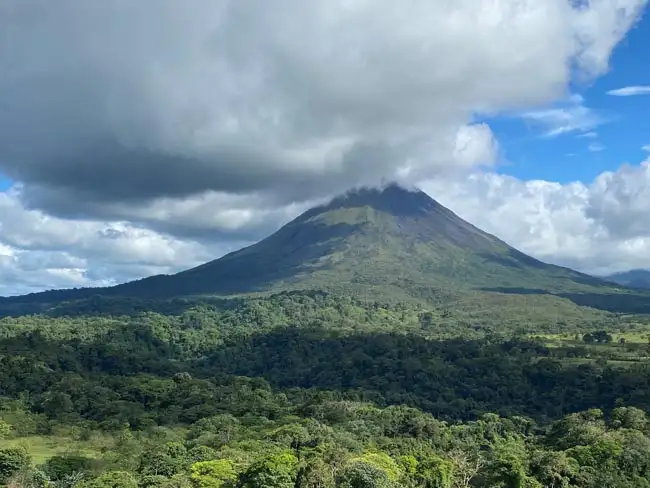
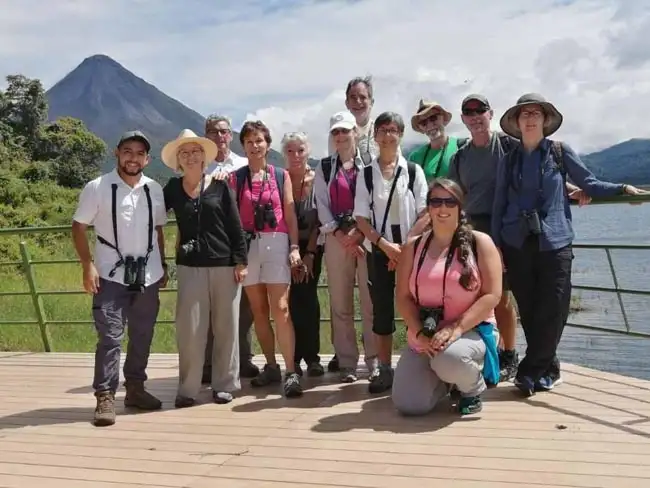

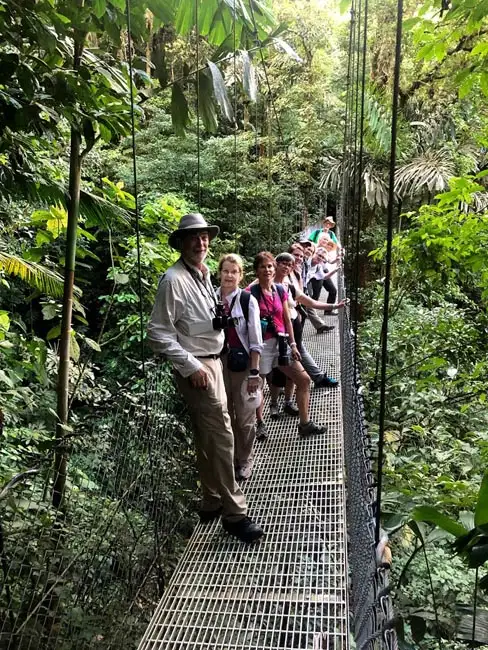
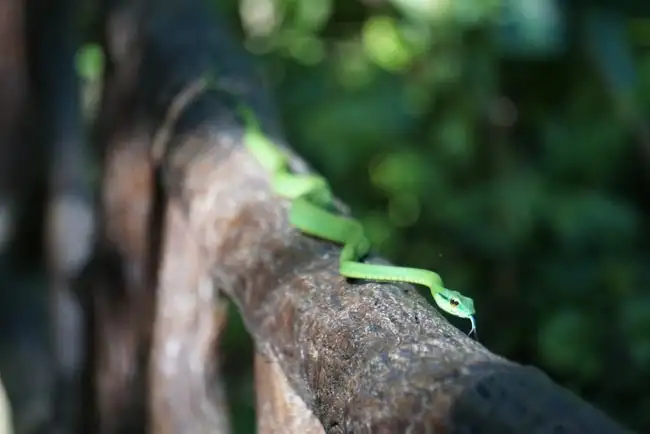

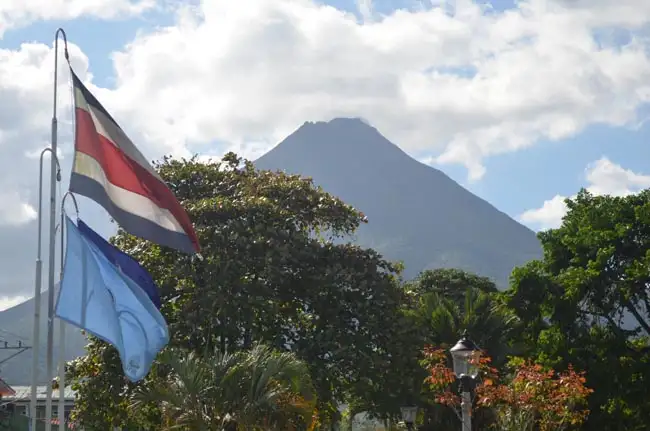
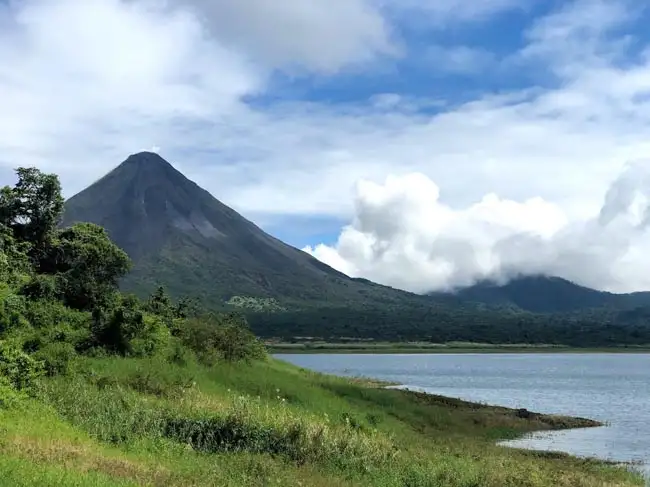

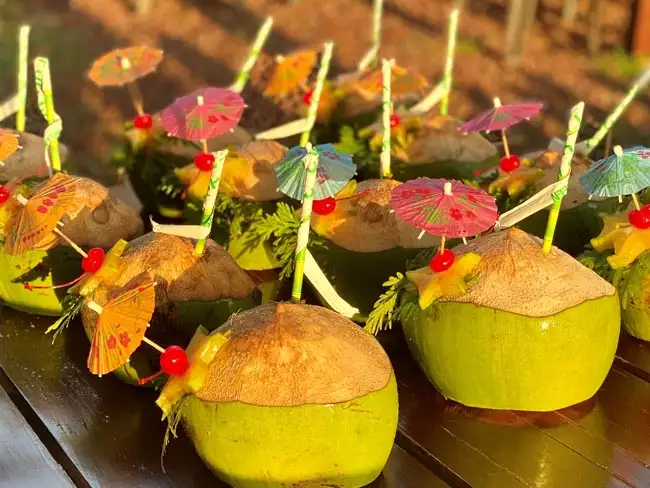

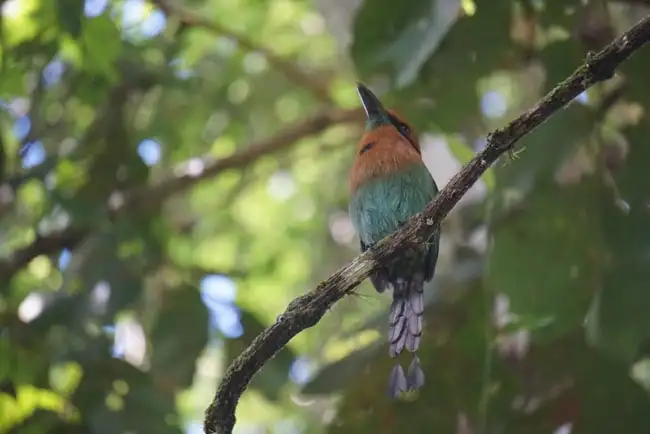
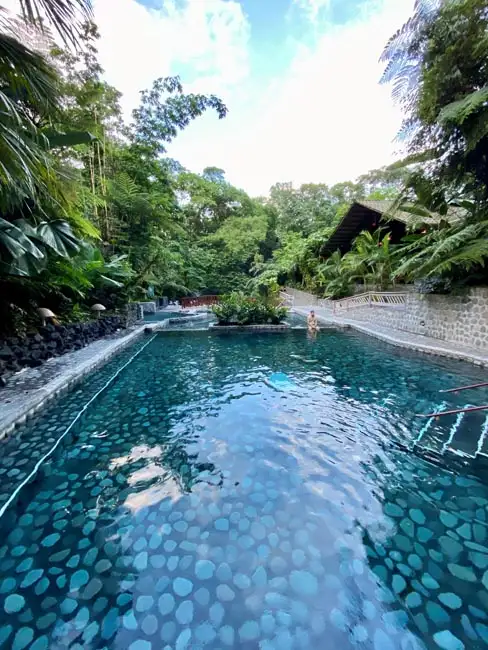
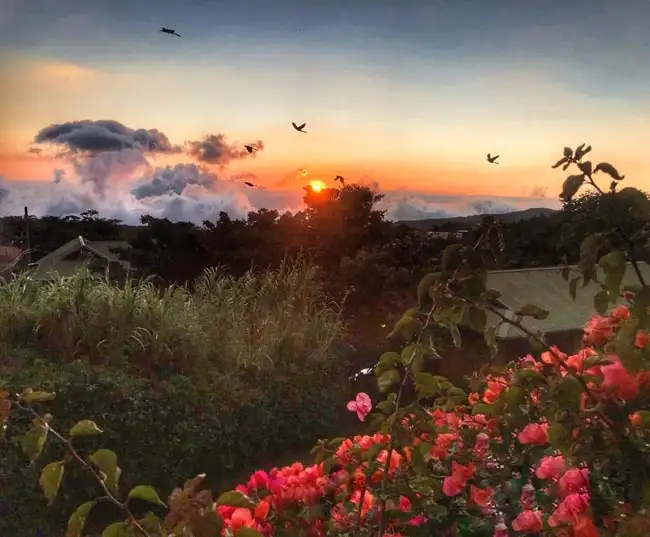
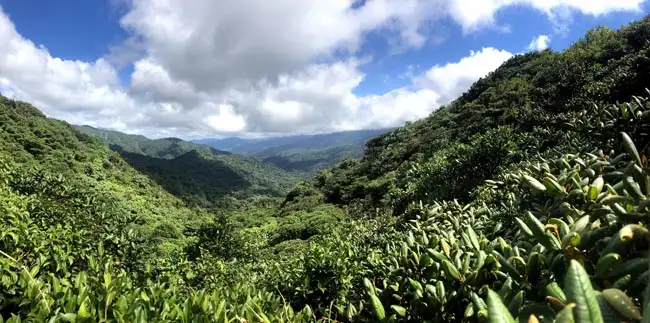

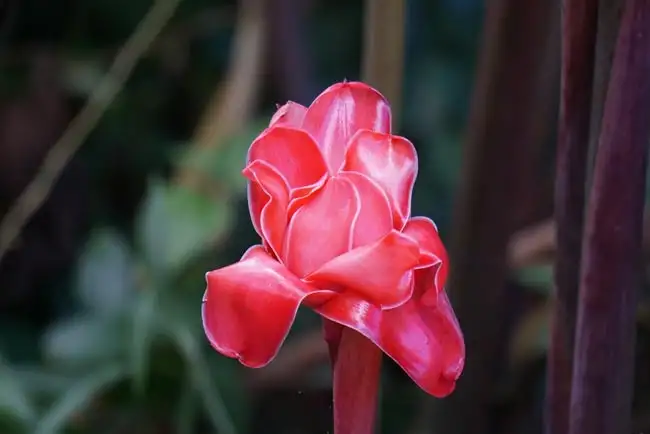
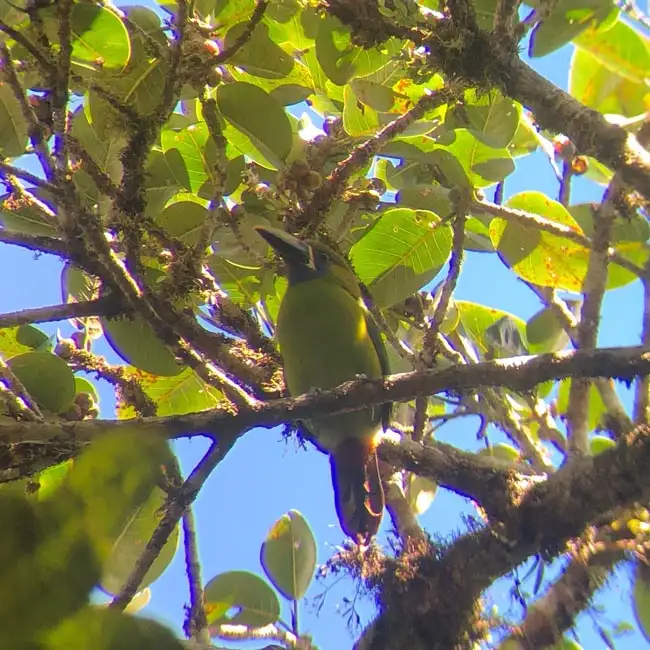
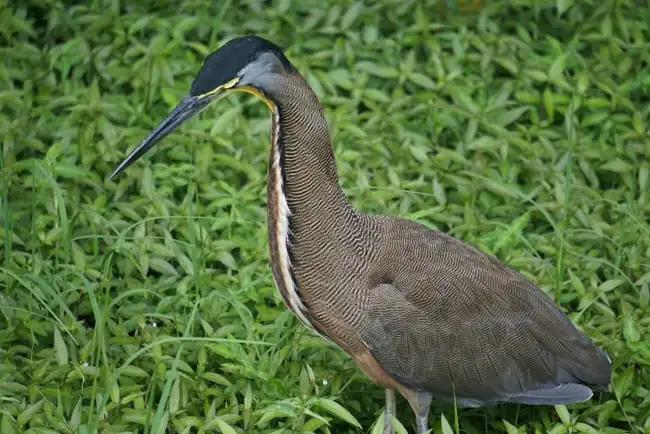
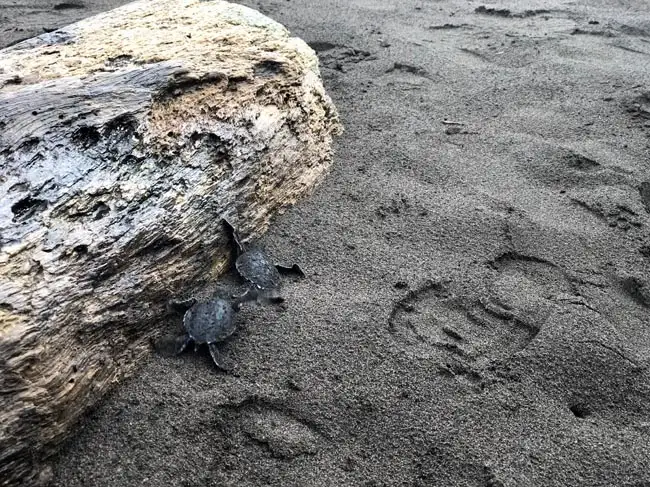
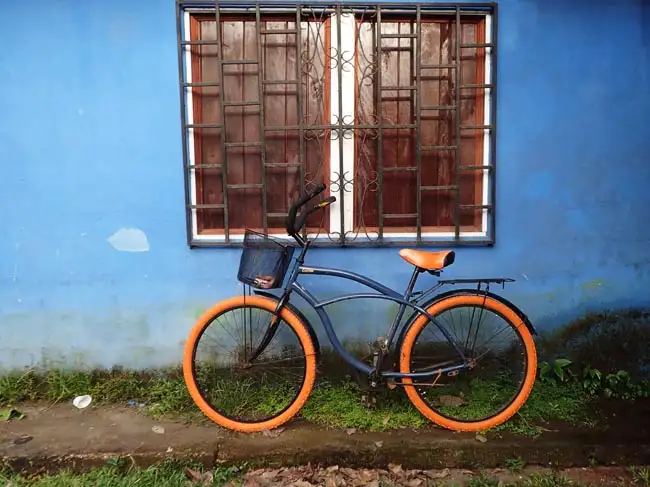


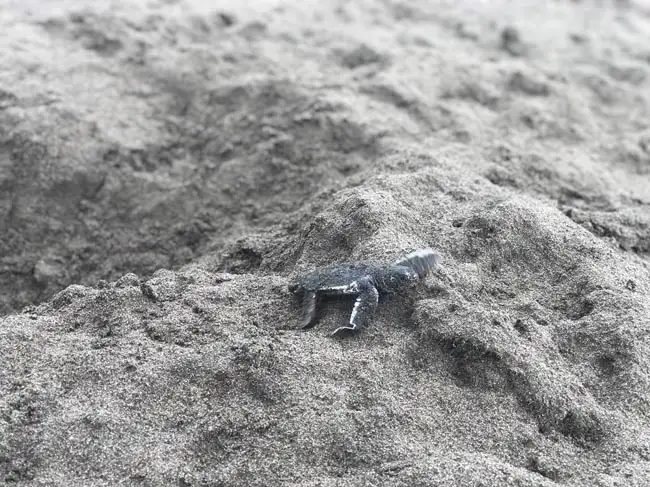

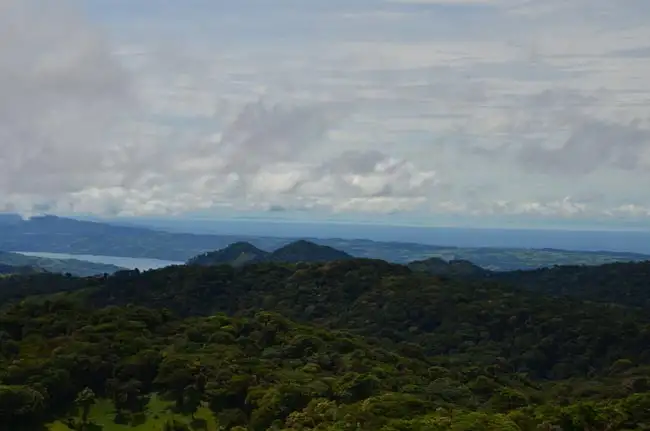
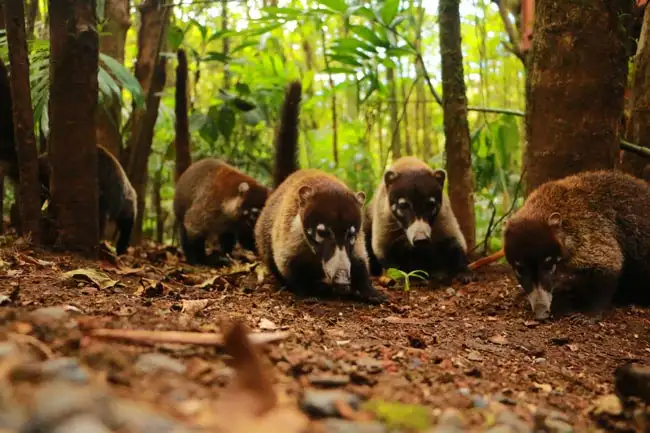
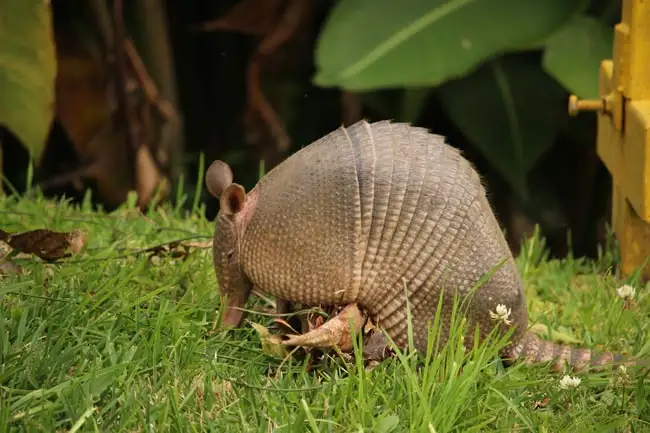
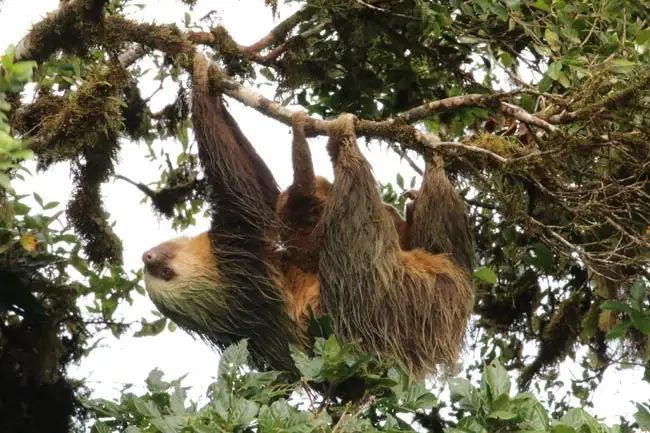

Excellent
Overall Rating
4.7
Extend Your Trip
This tour is part of a series that can be upgraded to make for a longer trip.
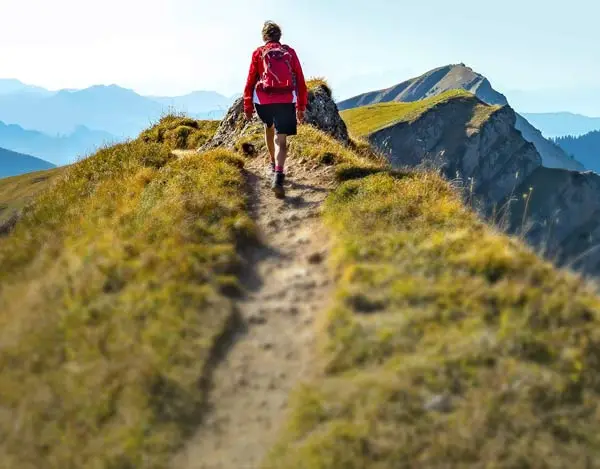
Fast and easy
Book This Tour
Book your unforgettable adventure today! For any questions or advice, don't hesitate to contact us.
Have questions?
1-800-665-3998
- Final payment: Due 90 days prior to departure.
- Deposit: A non-refundable $500 CAD Deposit is required at booking.
- Optional Single Supplement: $1040 CAD (number of singles limited).
(View options forsingle travellers) - Transfering Tour or Date: Transferring to another tour or tour date is only permissible outside of 120 days prior to departure and is subject to a $100 CAD change fee.
(Read our cancellation policy)
Choose your departure date:
Prices below are per person, twin-sharing costs in Canadian Dollars (CAD). Pricing does not include airfare to/from the tour and any applicable taxes.
Prices below are per person, twin-sharing costs in Canadian Dollars (CAD). Pricing does not include airfare to/from the tour and any applicable taxes.
Frequently Asked Questions
- What is the maximum number of participants on a trip?Most of our tours carry a maximum of 18 participants; some tours (ie hiking tours) top out at 16. In the event that we do not achieve our minimum complement by our 90-day deadline, we may offer group members the option of paying a "small-group surcharge" as an alternative to cancellation. If all group members agree, we will confirm the trip at existing numbers; this surcharge is refundable in the event that we ultimately achieve our regular minimum. If the small group surcharge is not accepted, we will offer a refund of your deposit or a different trip of your choice.
- Can I extend my tour either at the beginning or end? What about stopovers?Yes, you can extend your tour either at the beginning or the end and we can book accommodation in our tour hotel. Stopovers are often permitted, depending on air routing. Stopovers usually carry a "stopover" fee levied by the airline.
- How do I make a reservation? How and when do I pay?The easiest way to make a reservation is via our website; during office hours, you are also more than welcome to contact us by telephone.
A non-refundable deposit is payable at the time of booking; if a reservation is made within 90 days, full payment is required. Some trips require a larger deposit. If international airline bookings require a non-refundable payment in order to secure space or the lowest available fare, we will require an increase in deposit equal to the cost of the ticket(s).
Early enrolment is always encouraged as group size is limited and some trips require greater preparation time.
Once we have received your deposit, we will confirm your space and send you a confirmation package containing your trip itinerary, any visa/travel permit related documents, invoice, clothing and equipment recommendations, general information on your destination(s), and forms for you to complete, sign and return to us. Your air e-tickets (if applicable), final hotel list, final trip itinerary, and instructions on how to join your tour, will be sent approximately 2-3 weeks prior to departure. - What about cancellations, refunds, and transfers?Please review our cancellation policy page for details.
- I am a single who prefers my own room. What is a single supplement?All of our tours have a single supplement for those who want to be guaranteed their own room at each location.
This supplement is a reflection of the fact that most hotels around the world do not discount the regular twin-share rate for a room by 50% for only one person occupying a room. Most hotels will give a break on the price, but usually in the range of 25-30% of the twin-share rate. This difference, multiplied by each night, amounts to the single supplement.
The conventional amount can also vary from country to country and some destinations are more expensive than others for single occupancy. In order to be "single friendly," the supplements we apply are not a profit centre for us and we do our best to keep them as reasonable as possible.
On most tours we limit the number of singles available, not to be punitive, but rather because many hotels allow for only a limited number of singles; some smaller hotels at remote locations also have a limited number of single rooms available.
Please note that most single rooms around the world are smaller than twin-share rooms and will likely have only one bed. - Do you have a shared accommodation program?Yes! If you are single traveller and are willing to share, we will do our best to pair you with a same-gender roommate. Please note that should we fail to pair you, we will absorb the single supplement fee and you will default to a single room at no extra charge.
